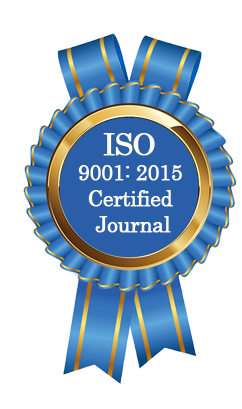| All | Since 2020 | |
| Citation | 105 | 60 |
| h-index | 4 | 4 |
| i10-index | 3 | 2 |
WJAHR Citation 
Login
News & Updation
Best Article Awards
World Journal of Advance Healthcare Research (WJAHR) is giving Best Article Award in every Issue for Best Article and Issue Certificate of Appreciation to the Authors to promote research activity of scholar.
Best Article of current issue
Download Article : Click here
Indexing
Abstract
ASSESSMENT OF BACTERIAL BIOFILM FORMATIONS IN URINARY CATHETERS; CASE CONTROL STUDY
Zena N. Aljalelli*, Muataz Alani
ABSTRACT
Objectives: To conduct bacteriological identification that causing biofilm in urinary catheters; using morphological and biochemical methods. Materials and method: The study was conducted during the period from Oct 2017 to July 2020. Bacteriological samples were collected from patients admitted to different Teaching Hospitals in Mosul city. Patients are those with urinary tract catheterization . A total of (106) bacteriological samples were collected. The studied subjects were (53) patients,(33 males and 20 females). The age of the patients was ranged between 1-80 years (mean46.82 ± 337). A control subjects are those who are admitted to the hospital for other causes and had short term catheterization, All samples were cultured on different media for full bacteriological investigation and estimation of total and viable counts. Results: In the present study a total of 131 microorganisms were isolated. Gram negative bacteria were more frequently encountered than the gram positive ones among all samples. Urinary catheters yielded 74 microorganisms while 57 bacterial isolates were obtained from urine samples. The most frequent gram negative isolate was E.coli for both urinary catheters and urine cultures, while E.faecalis and Staph. Epidermids were the dominant gram positive bacteria. The most effective antimicrobial agent against gram negative bacterial isolates was Imipenem, while ciprofloxacin was the top agent for gram positive isolates. The estimation of total and viable counts out of 53 tested samples 49 (92.6%) showed a total count ranging between ( 150-300 x106) bacteria, while the viable count was ranging between( 120-250 x104 ) bacteria only. The remaining 4 cases (7.4%) yielded a clear suspension and showed no growth on blood agar. Conclusions: The bacteria formed biofilm within the medical devices are mainly gram negative. Imipenim is the most effective agent against gram negative isolates, while Vancomycine, represented the drug of choice for gram positive isolates.
[Full Text Article] [Download Certificate]
